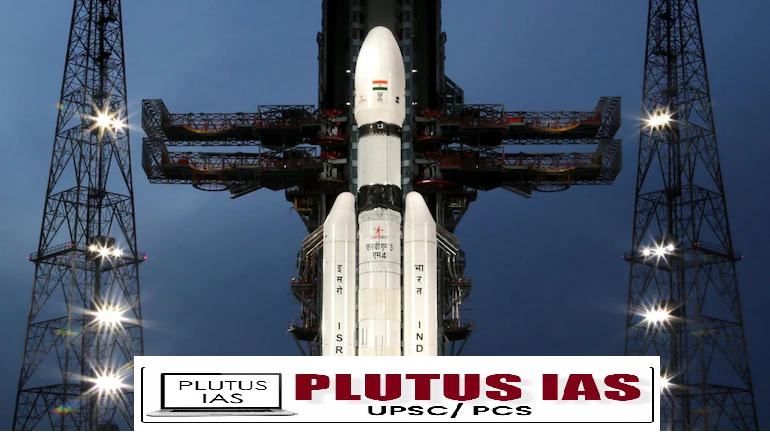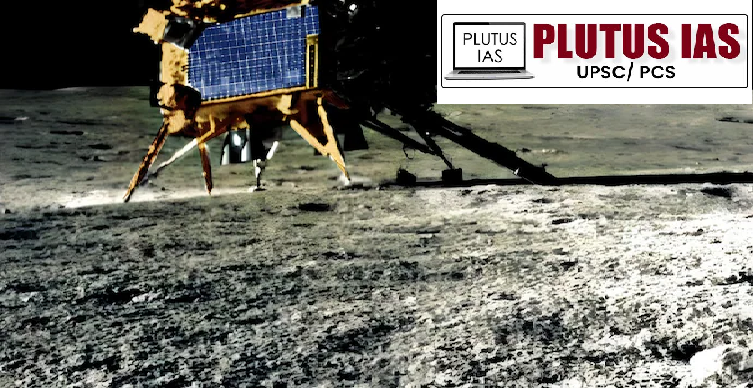Seismic signatures are records of ground vibrations caused by various geological events. On Earth, these include earthquakes, volcanic eruptions, and tectonic movements. On the Moon, the types of seismic activity differ due to its unique geological characteristics. The Moon lacks tectonic plates and has no active volcanoes, so seismic activity is influenced by different factors such as meteorite impacts, thermal stress, and possibly tectonic remnants from the Moon’s early history.
Seismic waves generated by these activities travel through the Moon’s crust and can be detected by sensitive instruments. By analyzing these waves, scientists can infer details about the Moon’s internal structure, including the composition and properties of its crust, mantle, and core.
Significance of the Detection
- Insights into Lunar Internal Structure
The seismic data collected by Chandrayaan-3 offers invaluable information about the Moon’s internal structure. By analyzing the seismic waves, scientists can deduce the composition and physical properties of the Moon’s crust and mantle. This helps to answer fundamental questions about the Moon’s geological history, including how it was formed and how its internal structure has evolved over time.
The data suggests that the Moon’s interior may have more complexity than previously understood. For instance, variations in seismic wave speeds can indicate differences in material density and elasticity within the Moon’s crust and mantle. This can provide insights into the presence of subsurface layers or structures that were not detectable before.
- Understanding Lunar Seismic Activity
The detection of such a large number of seismic signatures suggests that the Moon is more seismically active than previously thought. While the Moon does not experience tectonic plate movements like Earth, it is still subject to seismic activity due to other factors.
Meteorite impacts, for example, generate seismic waves that travel through the Moon’s surface. Thermal stresses caused by extreme temperature fluctuations between day and night can also induce seismic events. Understanding the frequency and intensity of these events is crucial for comprehending the Moon’s seismic behavior and its potential impact on future lunar exploration and settlement.
- Implications for Future Lunar Missions
The findings have significant implications for future lunar exploration and colonization efforts. If the Moon is indeed seismically active, it could pose challenges for the construction and stability of lunar habitats and infrastructure. The data from Chandrayaan-3 can help engineers design more resilient structures capable of withstanding seismic events.
Moreover, understanding lunar seismic activity is essential for ensuring the safety of future lunar missions. Knowledge of potential seismic hazards can guide mission planning and risk assessment, ensuring that both crewed and uncrewed missions are adequately prepared for potential seismic disturbances.
Technical Aspects of Seismic Detection
The Seismometer aboard Chandrayaan-3 was a highly sensitive instrument designed to detect minute vibrations on the Moon’s surface. It operates by measuring oscillations and converting them into seismic wave data. The instrument is calibrated to detect low-frequency seismic waves, which are typically associated with impacts and thermal stresses rather than high-frequency tremors.
The Seismometer’s sensitivity allowed it to capture a broad range of seismic events, from subtle tremors to more significant disturbances. The detection of 250 seismic signatures indicates that the instrument successfully recorded a variety of seismic activities, providing a comprehensive view of the Moon’s seismic environment.
Challenges and Limitations
- Extreme Environmental Conditions
The Moon’s surface experiences extreme temperature variations, ranging from extremely hot during the lunar day to extremely cold at night. These temperature fluctuations can affect the accuracy and sensitivity of seismic measurements. Instruments must be carefully designed to function reliably under such harsh conditions.
Chandrayaan-3’s seismic data is limited to the specific regions where the lander and rover operated. The lack of a global network of seismometers means that the data may not provide a complete picture of seismic activity across the entire lunar surface. Future missions and additional seismometers will be necessary to build a more comprehensive understanding of lunar seismicity.
Interpreting seismic data requires careful analysis and modeling. The seismic signatures detected by Chandrayaan-3 must be analyzed to distinguish between different sources of seismic activity, such as impacts versus thermal stresses. Accurate interpretation is crucial for drawing meaningful conclusions about the Moon’s geological processes.
Broader Implications for Space Science
The success of Chandrayaan-3 and its seismic discoveries extends beyond lunar science. The techniques and technologies developed for this mission have potential applications in studying other celestial bodies. Seismic studies on planets and moons can provide insights into their geological history, internal structure, and potential for future exploration.
For example, similar seismic studies could be conducted on Mars, where there is evidence of past volcanic activity and tectonic movements. By applying the lessons learned from Chandrayaan-3, scientists can develop more advanced instruments and methods for studying seismic activity on other planets and moons.
Additionally, the data from Chandrayaan-3 contributes to our broader understanding of planetary geology and seismic phenomena. By comparing seismic data from different celestial bodies, scientists can gain insights into the commonalities and differences in their geological histories and processes.
Conclusion
Chandrayaan-3’s detection of 250 seismic signatures on the Moon represents a significant milestone in space exploration and lunar science. The findings offer new insights into the Moon’s internal structure and seismic activity, challenging previous assumptions and opening new research avenues. As we continue to explore the Moon and other celestial bodies, the data collected by Chandrayaan-3 will play a crucial role in advancing our understanding of the universe and preparing for future space missions.
The mission highlights the importance of continued exploration and scientific inquiry in unraveling the mysteries of our solar system. By building on these discoveries, we move closer to unlocking the secrets of the Moon and beyond, paving the way for future generations of space explorers and scientists.
Chandrayaan-3’s achievements underscore the innovative spirit and dedication of space agencies around the world. As we look to the future, the insights gained from this mission will inform and inspire the next wave of exploration, ensuring that humanity’s quest for knowledge continues to push the boundaries of what is known about our solar system and the cosmos.






No Comments